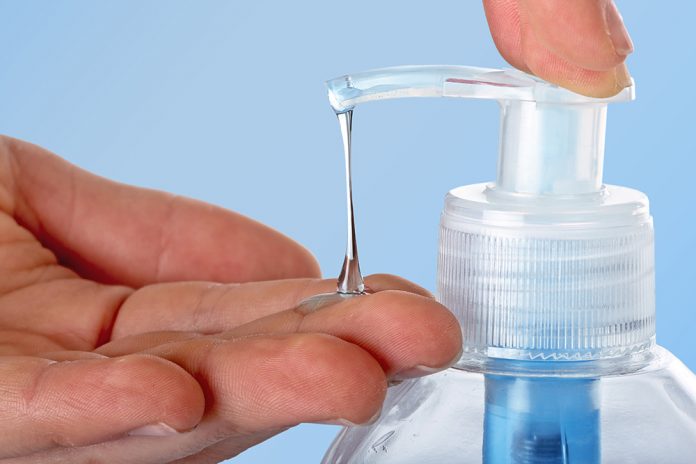The recent outbreak of the COVID-19 virus has seen an increase in the number of companies entering the market to supply hand sanitisers to meet the hygiene demands of consumers and healthcare professionals. These products can contain ethanol, isopropanol or n-propanol, which are flammable liquids and should be manufactured using suitable approved packaging, Personal Protective Equipment (PPE) and have earthing procedures in place to prevent static discharge.
Solvents are in our everyday household products
The Solvents Industry Association (SIA) promotes the safe and responsible use of solvents and flammable liquids and encourages all existing and potential manufacturers of these products to seek guidance on safe handling, to avoid serious injury or damage to property.
Andrew Norman, General Secretary of the SIA said, “The increase in the number of manufacturers in the sanitiser market and the now widespread use of alcohol-based hygiene products by the general public, has helped to illustrate the importance of the solvents industry to today’s society”.
New entrants into the hand sanitiser production arena have health and safety obligations
“There have been numerous examples of posts online during the COVID-19 crisis, showing how industry has diversified and worked tirelessly to ensure that demand for sanitiser products is met. However, it has become apparent from these posts and from the guidance being sought by these companies, that many new producers lack experience in the field and have little or no knowledge of their Health and Safety obligations when handling flammable liquids”.
He continued, “The use of inappropriate packaging for containment of these flammable liquids has been evident, with the danger of static discharge being a major issue, particularly with respect to unprotected plastic Intermediate Bulk Containers (IBCs), along with further dangers to commercial drivers and other road users through a lack of understanding of ADR requirements and labelling”.
The Dangerous Substances and Explosive Atmospheres Regulations (DESEAR) are in place for protection against risks from fire, explosion and similar events arising from dangerous substances used, or present in the workplace. These must be adhered to when producing hand sanitiser products.
One of the most widely used alcohols used in sanitisers is ethanol (ethyl alcohol), which of course is the type of alcohol used in alcoholic beverages, such as wines and spirits.
Demystifying Hand Sanitiser perceptions to raise safety levels
In this article, we will attempt to raise awareness of the hazards associated with sanitiser products and dispel some of the myths that surround them.
1. Handgels contain alcohol – Does that mean that you can drink it?
FALSE – Handgel products can contain up to 85% ethanol, which will of course make a person drunk if consumed, but handgels also contain a range of other chemicals which are toxic or nasty tasting to prevent human consumption.
There has been an alarming number of instances where people in the UK have broken into hand sanitiser stations to consume the product inside. The toxic additives (denaturants) can cause dizziness, blindness, permanent kidney and liver damage or even death. The message is clear – Do not consume hand sanitiser products under any circumstances.
2. Hand sanitiser products are flammable
TRUE – Ethanol solutions are flammable at concentrations of 24% and above, so handgels can be ignited if the product or vapour from the product comes into contact with a spark, flame or even static electricity.
Smoking is to be avoided in the presence of open containers and hands must me completely dry of the product if a source of ignition is present. There have been cases of individuals receiving serious burns to hands from cooking on stoves where the product hasn’t yet dried and even from the natural discharge of static from a metal surface after sanitising.
3. Leaving sanitisers in a hot vehicle will catch fire
FALSE – There have been some reports in the press of bottles of hand sanitiser catching fire when left in vehicles in hot weather.
The truth is that sanitisers are indeed flammable at relatively low temperatures as they can give off vapours when used, or are left in open containers. However, they require a spark of flame to be applied to the vapour to be ignited and will not catch fire by normal atmospheric high temperatures. The temperature would need to exceed 360°C to ignite from the presence of heat alone (auto ignition).
Many household products that we take for granted every day, from paints and coatings to cleaning products to pharmaceuticals and cosmetics, contain solvents. These can all be used safely if handled with care.
The Solvents Industry Association is here to support and provides comprehensive guidance on how to handle solvents and flammable liquids safely.
View our safety films on the Safe Handling of Solvents, Solvents and Static Electricity and Solvents and IBCs, along with our range of essential Guidance Notes for further information.









